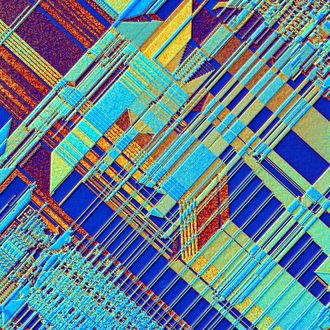
Since the 1960s, a fundamental rule guiding the technology industry, first observed by Intel founder Gordon Moore, has remained stable: The number of transistors that can be placed on a microchip doubles every year. In 1975, Moore’s Law, as it came to be known, was revised to hold that the number of transistors doubled every two years.
The effect of Moore’s Law (which is not an actual scientific law) was that it allowed the computer industry to forecast the capabilities of future machines accurately, and it helped component manufacturers to set goals and benchmarks, as well. As the New York Times put it, Moore’s Law “describes the pace of change in a manufacturing process that has made computers exponentially more affordable.”
Moore’s Law dictates why the smartphone in your pocket is more powerful than the Gateway you were using at the turn of the century. It’s why companies like Apple and Samsung can release new iPhone and Galaxy models every year with significant boosts in performance and speed. If the pace set by Moore’s Law were to become unattainable, then your computers and phones might, hypothetically, plateau in terms of performance.
But Moore’s Law, which is tied to the physical components that make computing possible, has its limits. From the Times:
Chip scientists are nearly at the point where they are manipulating material as small as atoms. When they hit that mark within the next five years or so, they may bump into the boundaries of how tiny semiconductors can become. After that, they may have to look for alternatives to silicon, which is used to make computer chips, or new design ideas in order to make computers more powerful.
In other words, this guiding principle states that computers get more powerful because physical components get smaller. Unfortunately, things can only get so small (this is, more or less, an actual scientific law), meaning that chip makers now have to find totally new ways of increasing computing power beside cramming more transistors onto a piece of silicon. (Admittedly, an oversimplification of what chip makers do.)
To that end, the Institute of Electrical and Electronics Engineers (IEEE), the leading tech-engineering organization, will announce a new road map today, broader than the one set out by Moore’s Law. The International Roadmap for Devices and Systems will also track other types of computer technologies, such as quantum computing.
There are some holdouts. Intel seems to think that Moore’s Law will continue to hold for a bit longer. “I have witnessed the advertised death of Moore’s Law no less than four times,” CEO Brian Krzanich wrote last month. But the IEEE’s move points to increasing anxiety about the physical limits on our digital age — and nothing breeds ingenuity like the impending collapse of a central rule of technology. The bright side for users is that huge innovations are no longer a luxury for tech makers; soon, they’ll be a necessity.





























